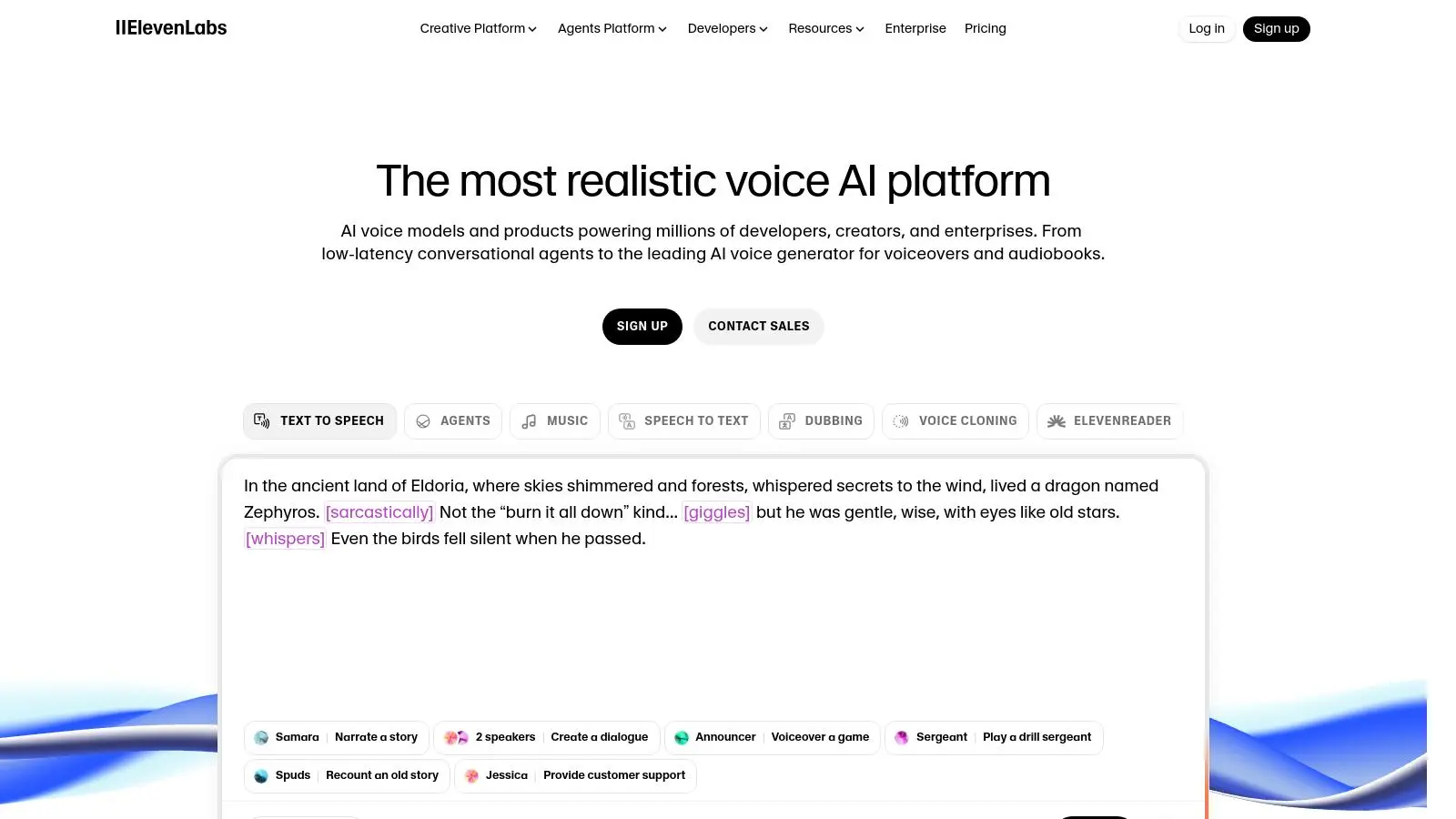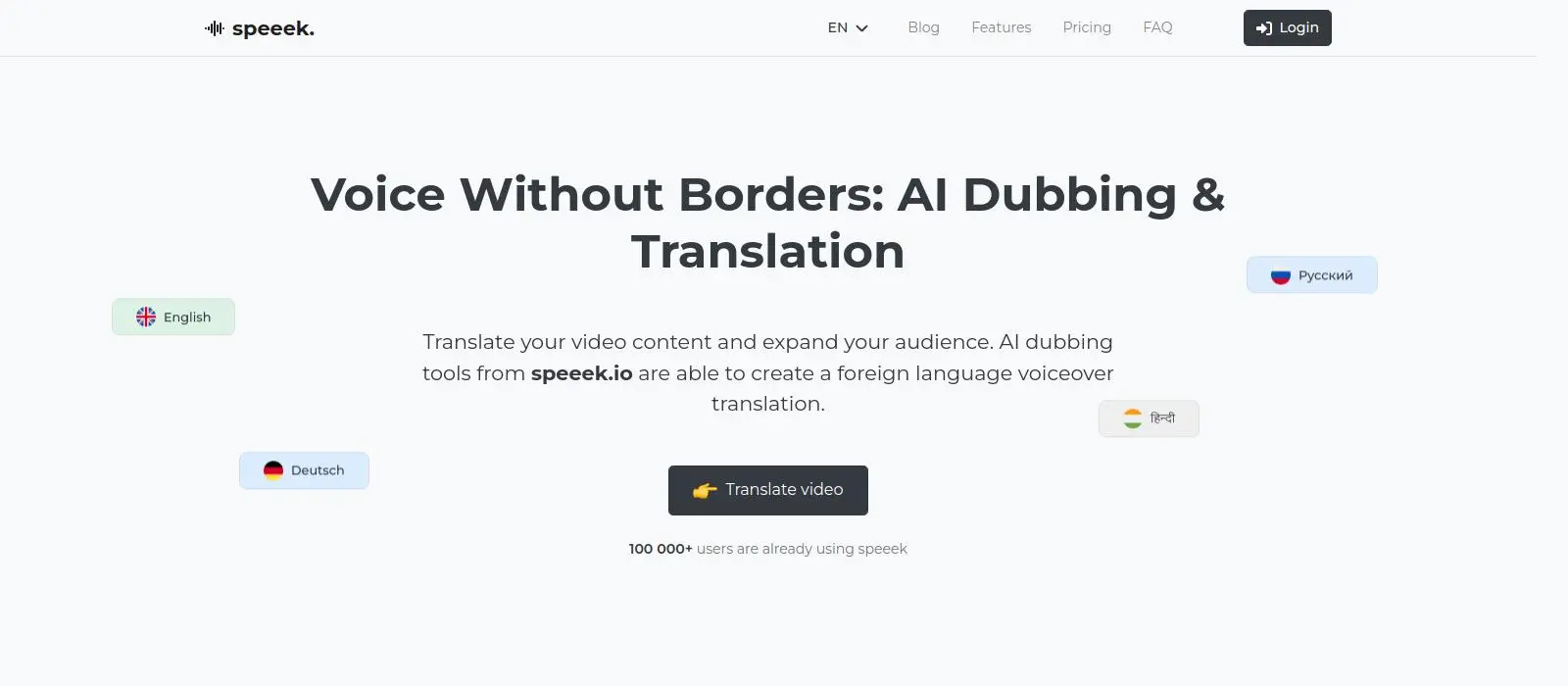Imagine this: you record a 30-second sample of your voice, and within minutes, an AI can speak any text in your tone across 29 languages. This isn't science fiction—it's the reality of 2025. Voice cloning technology has reached a point of no return, where even experts can't distinguish synthetic speech from the real thing.
For content creators, this means the ability to translate videos into dozens of languages while keeping your own voice. The savings? Up to 60% of your budget, with production time reduced by 5-10x. But with great power comes great responsibility: voice fraud has surged by 442% in just the last six months of 2024.
The Revolution Has Arrived: From Hours of Recording to 3 Seconds
Five years ago, quality voice cloning required hours of studio recording and weeks of processing. Today, everything has changed dramatically. Systems like Microsoft's VALL-E 2 have achieved what's called "human parity"—in blind tests, even experts can't tell AI from a real voice.
💡 Fact: In 2023, voice cloning required at least 10 minutes of audio. In 2025, just 3 seconds suffices for basic quality and 30 seconds for professional results. The technology has accelerated 200x in two years.
What does this mean in practice? A YouTuber can record one video in English and have Spanish, French, and Mandarin versions within an hour—in their own voice. Educational platforms translate courses into 20 languages without hiring voice actors. Corporations create training materials for offices worldwide in hours instead of months.
The Magic of Voice Cloning: Three Stages from Recording to Synthesis
Voice cloning isn't simple sound copying. It's creating a mathematical model of exactly how you speak. The process works in three critical stages:
Stage 1: Analysis and Decomposition
The neural network breaks down your speech into its smallest components—phonemes (minimal sound units). Simultaneously, it extracts unique characteristics: timbre (what makes your voice recognizable), pitch, rhythmic patterns, pronunciation quirks, and emotional coloring.
Stage 2: Creating a Digital Fingerprint
All these characteristics are encoded into a compact numerical vector—the speaker embedding. Think of it as your voice's DNA, only digital. This "fingerprint" is just a few kilobytes in size, yet contains complete information about your vocal identity.
Stage 3: Synthesizing New Speech
When new text needs to be spoken, the system uses your "fingerprint" as a template. Transformer models analyze context and long-term dependencies in the text. Diffusion models generate high-quality audio without artifacts. The result? Speech that sounds exactly like you, but says words you never spoke.
Modern systems use a combination of architectures: recurrent neural networks (RNN) for memory, convolutional neural networks (CNN) for acoustic analysis, and attention mechanisms for context. The revolutionary breakthrough? Neural Codec Language Models, which treat speech generation as a language modeling task.
How Much Audio Do You Really Need?
There are many myths here. Let's break it down by quality levels:
- 💨 Instant Cloning (3-30 seconds): 70-85% accuracy. Good for experiments and simple tasks. Hume AI's OCTAVE clones in 5 seconds, but the result isn't perfect.
- ⚡ Basic Quality (1-3 minutes): 85-90% accuracy. Optimal for YouTube and social media. ElevenLabs recommends exactly this amount for instant cloning.
- ⭐ Professional (30+ minutes): 95-99% accuracy. Essential for commercial projects, audiobooks, and corporate use.
The rule is simple: more data equals better clones. But the law of diminishing returns applies—after 3 hours of recording, quality improvements are minimal.
Service Comparison: Best Options for Content Creators
The market offers dozens of solutions, but four factors are critical: cloning quality, language support, pricing, and ethical approach. We've analyzed five key players in detail.
🥇 ElevenLabs — The Gold Standard

Price: from $5/month (10,000 characters) to Enterprise
Languages: 32+ for TTS, 29 for dubbing
Requirements: from 1 minute of audio
Rating: 4.8/5 on G2 and ProductHunt
Advantages:
- Exceptional quality for English voices
- 70+ languages for Eleven v3 model
- Emotional context recognition
- Spotify integration for audiobooks
Disadvantages:
- Effective cost 2-3x higher due to regenerations
- February 2025 scandal: ToS granted "perpetual, irrevocable" license to voice data
- Blocked in some regions
🌐 Speeek — International Solution with Focus on Accessibility

Price: from $12/month (10 minutes) = ~$0.40 per minute of video
Languages: 20+
Requirements: from 3 seconds
Free tier: 5 minutes monthly
Advantages:
- 5-10x cheaper than Western competitors ($0.40 vs $2-5 per minute)
- Multiple payment options including cryptocurrency
- Works globally without restrictions
- Fast processing: ~5 minutes for a 10-minute video
- No watermarks even on free plan
Disadvantages:
- Young project (2 years on the market)
- Limited independent reviews
🌍 Rask AI — Maximum Language Coverage

Price: from $50-60/month for 25 minutes
Languages: 130+ for translation, 28-29 for voice cloning
Rating: 2.7/5 on Trustpilot (warning sign)
Advantages:
- Largest language selection on the market
- Multi-speaker detection up to 5 speakers
- Built-in translation editor
- Auto-generation of Shorts for social media
Disadvantages:
- Numerous quality complaints: "95% of translations are wrong"
- Slow support
- High price for questionable quality (~$2/minute)
🎯 Wavel AI — Universal Tool
Price: from $25/month
Languages: 100+
Requirements: 30-60 seconds of quality recording
Unique feature: Speech-to-speech with original emotion preservation, real-time voice changer, claimed 99%+ accuracy.
Issue: 3.5-4.0/5 rating, criticism of translation quality and numerous bugs.
🏆 Papercup — Ethical Leader for Enterprise
Price: $0.20 per minute of translated video
Approach: Human-in-the-loop (professional translators check every AI output)
The only service with a public Ethical Pledge: mandatory explicit consent, usage control, full transparency. Works with Sky News, Bloomberg, Discovery—serving 300+ million viewers.
For producing 100 minutes of video per month: Speeek costs $40-50, ElevenLabs around $99, Rask AI up to $120. For international audiences, Speeek offers the best value-for-money ratio.
The Main Challenge: Translating Video While Keeping Your Voice
Traditional dubbing has a fundamental problem—it destroys your vocal identity. Imagine: you've spent years building an audience that recognizes you by voice. Then suddenly, the Spanish version features a completely different person. The connection is broken.
AI dubbing with voice cloning solves this elegantly. The system analyzes your voice in English, creates a "fingerprint," and applies it to translations in any language. Result? You're speaking French, Spanish, Mandarin—but it's still your voice.
Live Example: Voice Cloning in Action
Watch the difference between the original video and a translation with cloned voice. Notice how the unique speech characteristics are preserved:
Original in English
Translation with cloned voice (DE)
Notice something? Timbre, intonation, speech patterns remain unchanged. Only the language differs. That's how modern voice cloning works.
🎯 Try Cloning Your Voice
Upload a video in any language — get translations in 20+ languages with your voice. Processing takes 5-10 minutes, no watermarks.
Start Free5 free minutes monthly • No credit card required
Important Nuances in Translation
Voice cloning across languages isn't a perfect process. There are technical limitations you should know about:
- Original language accent: If you clone your voice in English and synthesize in Spanish, a slight English accent might slip through. Solution—clone in the language you'll use most.
- Quality varies by language: English shows the best results (most training data). Rare languages have lower accuracy.
- "Accent bleeding": When transitioning between languages, slight mixing of phonetic features can occur.
The Dark Side: When Technology Becomes a Weapon
With great power comes great responsibility. The same technology that helps creators scale their audience is being used by scammers to deceive people. And the numbers are frightening.
📈 Voice Fraud Explosion
2024-2025 statistics show a disturbing trend:
- 442% surge in voice attacks from H1 to H2 2024
- $410 million in losses in H1 2025 (documented cases only)
- One in five attacks happens every 5 minutes
- 25% of adults have either experienced AI voice scams or know a victim
- 77% of victims lost money, with 7% losing $5,000 to $15,000
💰 Real Case — $25 Million in One Video Conference
In February 2024, global engineering firm Arup in Hong Kong lost $25M after a video conference featuring deepfake images of their CFO and other executives. A finance employee made 15 transactions across 5 bank accounts without suspecting fraud. The deepfake was so convincing it included video, voice, and real people's speech patterns.
😱 Why We're So Vulnerable
Human deepfake detection is catastrophically low:
- 73% accuracy for audio deepfakes
- 24.5% accuracy for video deepfakes
- 70% of people aren't confident they can tell clones from originals
The problem? Our brains are evolutionarily wired to trust the voices of loved ones. When "mom" or "the boss" calls asking for an urgent wire transfer, we act instinctively without engaging critical thinking.
🛡️ Legislation Tries to Catch Up
Regulators worldwide understand the threat, but legislation is highly fragmented:
USA:
- Tennessee became the first state with the ELVIS Act (2024)—protecting voice as a form of personal property
- FCC declared (February 8, 2024) that AI-generated calls fall under TCPA—requiring explicit consent
- FTC proposed rules banning impersonation fraud
Europe:
- GDPR treats voice as special category biometric data
- EU AI Act (effective August 1, 2024) requires AI content labeling from February 2, 2025
- UK Online Safety Act 2025 includes deepfake pornography as a priority offense
International:
- Many countries lack specialized voice cloning legislation
- General data protection laws apply
- Legal uncertainty for content creators
✅ Ethical Rules for Content Creators
If you use voice cloning professionally, follow these principles:
- Consent: Clone only your own voice or obtain explicit written permission. Specify exactly how the voice will be used, for how long, with right to revoke.
- Transparency: Always disclose AI use to your audience. Add audio disclaimers at the start, text labels in descriptions, hashtags like #AIVoice #VoiceCloning.
- Data Security: Encrypt voice samples, restrict model access, use privacy-first services.
- Usage Limits: Never use for impersonation, fraud, hate speech, misinformation, or harassment.
🔐 How to Protect Yourself from Voice Fraud
For Family and Friends:
- Code word: Set a secret word for emergencies. "Mom, what's our code word?"
- Call back: If someone asks for money, hang up and call back on a known number.
- Alternative channels: Verify via SMS, WhatsApp, Telegram.
- Don't rush: Scammers create urgency. "Right now!" is a red flag.
For Business:
- Mandatory protocols: Any transfer over $10,000 requires two-factor confirmation
- Voice confirmation: Only through registered numbers
- No urgency: No "immediate" transfers without second verification
- Employee training: Regular workshops on recognizing deepfakes
91% of US banks are reconsidering voice verification for major clients after the spike in incidents.
Practical Guide: Create a Quality Clone in 6 Steps
Theory understood. Now practice—how to actually create a voice clone that sounds natural and professional.
Step 1: Prepare Equipment
Minimum setup:
- Microphone: Audio Technica AT2020 or Rode NT1 ($150-200). Budget option—quality smartphone (iPhone with Lossless Recording or Android with Hi-Res Audio).
- Pop filter: Essential! Costs $10-15 but eliminates plosives ("p", "b").
- Distance: 6-8 inches from microphone.
Step 2: Choose Your Space
Recording quality = clone quality. Look for:
- Quiet location: No background noise (traffic, AC, refrigerator)
- Minimal echo: Room with soft furniture, carpets, curtains. Avoid empty rooms with bare walls.
- 2+ feet from walls: To avoid sound reflections
Pro tip: If you lack a studio, record in a closet among clothes—fabric absorbs sound beautifully.
Step 3: Configure Recording Format
Technical parameters are critical:
- Format: WAV or FLAC (lossless). Forget MP3 for samples.
- Sample rate: 44.1 or 48 kHz (minimum 22 kHz)
- Bit depth: 16-24 bit
- Volume: RMS between -23dB and -18dB, true peak no higher than -3dB
For iPhone: Settings → Voice Memos → Lossless Recording ON
For Android: Voice Recorder → High Quality (256kbps, 48kHz)
Step 4: What to Record
Sample content determines how versatile your clone will be:
- Diverse content: Dialogues, narratives, informational text, emotional phrases
- Different sentence types: Questions, exclamations, statements, long and short phrases
- Natural pauses: 1-1.5 seconds between sentences
- Your usual style: Speak as you normally do. If it's a podcast—conversational style. If an audiobook—reading style.
- Recording in noisy environment → clone will sound muffled
- Built-in laptop microphone → robotic sound
- Too short sample (20 seconds) → won't capture uniqueness
- Mixed emotions (jumping from laughter to seriousness) → unstable tone
- Breathing into microphone → explosive sounds the clone will copy
Step 5: Post-Generation Optimization
Uploaded sample, created clone. Now fine-tune parameters:
- Stability: 40-60% for balance. Low (0-30%) gives expressiveness but unpredictably. High (70-100%) is consistent but monotonous.
- Clarity/Similarity: High stays closer to sample but may copy artifacts. Low gives more generic sound.
- Style Exaggeration: Increase for expressive reading, decrease for neutral tone.
Dialogue tags for emotions:
- [excited] This is incredible!
- [sad] Unfortunately, it didn't work
- [whisper] Don't tell anyone
- [shouting] Attention everyone!
Step 6: Audience Testing
Create 2-3 versions with different settings. Test on at least 20-30 people of varied demographics, including "cold" listeners who don't know you.
Metrics to track:
- Preference—which version they prefer
- Authenticity—how natural it sounds (1-10)
- Clarity—how understandable (1-10)
- Detection—can they tell AI from real in blind test
Iterate based on feedback until reaching 85%+ satisfaction.
Conclusion: Voice is the New Currency
Voice cloning in 2025 isn't futuristic technology. It's a mature tool already transforming content creation, education, corporate communications, and entertainment. From 3 seconds to professional quality. From one language to global reach.
Content creators worldwide are in a unique position. While some services are expensive or regionally limited, solutions like Speeek offer accessibility, quality, and compliance—all at once. The window of opportunity is open now, while competition remains low.
Three Key Takeaways:
- Technology is ready: 85-97% accuracy, 5-10x production acceleration, 40-60% budget savings
- Ethics are critical: Get consent, disclose AI use, protect data, set code words against scams
- Practice is accessible: Quality microphone $150, quiet room, 1-3 minutes recording—and you're ready for global audiences
Your voice is your uniqueness. Voice cloning technology lets you scale it without losing identity. Use it responsibly, and your voice will resonate across all continents.
